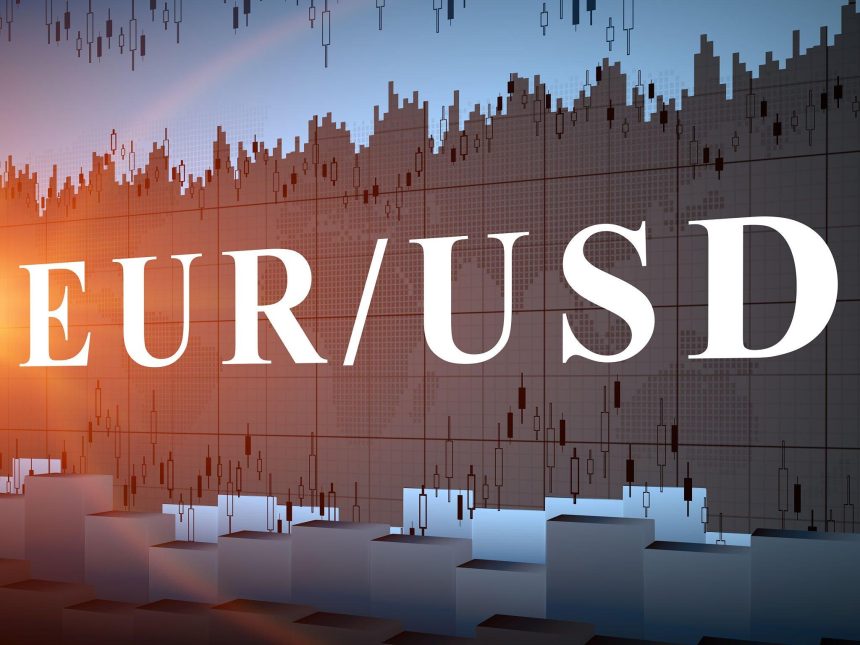The EURUSD pair extended its rally for a tenth straight session, reaching above 1.1800—a level not seen since early 2021—as the US Dollar weakened sharply under the weight of fiscal concerns, dovish Fed expectations, and political pressure from former President Trump. Eurozone optimism also played a key role, with June manufacturing PMI rising to 49.5 and German unemployment improving more than expected. While the rare earths deal with China briefly supported global sentiment, ongoing trade tensions with Japan and expectations of at least one Fed rate cut by September continue to weigh on the greenback. With markets now looking ahead to Powell’s speech at the Sintra ECB Forum and key US data such as ISM Manufacturing PMI, a near-term correction in EURUSD is possible, though the broader bullish trend remains intact.
A revived debate over Washington’s fiscal path has reignited dollar bears. The Congressional Budget Office now pegs President Trump’s tax-and-spend bill at $3.3 trillion over 10 years, inflating an already record-high $36 trn debt load.
Fueling the sell-off, Trump hand-delivered Fed Chair Jerome Powell a list of global policy rates and scrawled that the U.S. rate “should be between Japan’s 0.5 % and Denmark’s 1.75 %.” The very public brow-beating deepens investor angst over Fed independence.
Moreover Rate-futures markets have reacted swiftly: the CME FedWatch Tool shows ~60 % odds of a 25 bp cut at the 17 September FOMC, with two moves in total now pencilled in for 2025. As lower-for-longer yields sap carry appeal, the dollar index (DXY) hovers near four-year lows.
Eurozone Fundamentals Firm Up
Manufacturing revival: The HCOB/S&P Global PMI edged up to 49.5 in June, its best reading since August 2022 and a tenth consecutive rise that hints at an industrial bottoming.
Furthermore Labour resilience: German unemployment grew by just 11 k—well below the 15 k consensus—keeping the jobless rate steady at 6.3 % despite a sluggish economy.
Inflation on target: EURUSD area headline CPI ticked up to 2.0 % YoY while core held at 2.3 %, perfectly matching ECB forecasts and giving policymakers room to wait before cutting again.
Together, these numbers reinforce the narrative that Europe is stabilising just as the United States wobbles—helping propel EURUSD to its highest level since early 2021.
Trade Cross-Currents: Calm and Storm
Markets cheered news that Washington and Beijing agreed to expedite rare-earth shipments, easing supply-chain angst for high-tech manufacturers. Yet the relief rally was capped when Treasury Secretary Scott Bessent warned tariffs on Japan could spike as early as 9 July if talks fail—an echo of Monday’s public complaint by President Trump over Japanese rice imports.
The push-and-pull underscores how quickly sentiment can flip: any escalation would likely dent risk appetite and slow the euro’s ascent.
EURUSD Technical Picture: Overbought but Bullish Bias Intact
Momentum: Daily RSI sits above 74—firmly overbought—flagging correction risk.
Furthermore Immediate resistance: 1.1830 (April 2021 swing high) then 1.1910 (38.2 % Fib of 2018-2020 bear trend).
First supports: 1.1750 (intraday pivot) and 1.1700 (5-day EMA); deeper pullbacks eye 1.1620/1.1580.
Trend structure: Price is riding the upper Bollinger band and remains well above its 200-day EMA at 1.1180, keeping the broader up-bias unchallenged.
Moreover Short-term traders may fade strength toward 1.1830, but medium-term bulls will view dips toward 1.17 as buying opportunities unless a daily close back below 1.1580 invalidates the breakout.
Event Risk Dashboard
Date/Time (GMT) Event Why It Matters
- 1 July 14:00 US ISM Manufacturing PMI (Jun) A sub-50 print would confirm industrial slowdown, reinforcing Fed-cut bets.
- 1 July 14:00 JOLTS Job Openings (May) Soft demand for labour would add to dollar headwinds.
- 1 July 17:00 Powell, Lagarde et al. speak at Sintra ECB Forum The tone from global central bankers could validate—or upend—current market pricing.
- 2 July 06:00 Eurozone PPI (May) Input prices offer clues on future CPI trends.
- 3 July 12:30 US Weekly Claims Timely gauge of labour-market cooling.
A hawkish surprise from Powell or a hotter-than-expected ISM could trigger a snap correction; otherwise, momentum favours further euro strength into Q3.
Outlook: Can 1.20 Be Reached?
Barring a sharp rebound in U.S. data or an unexpected ECB pivot, fundamental and policy flows favour the euro. Yet the path is unlikely to be linear:
Tailwinds: Eurozone data creeping toward expansion, stable inflation, and capital inflows seeking relative political calm.
Headwinds: Overbought technicals, tariff landmines, and the risk that strong euro appreciation itself slows growth and worries ECB doves (Vice-President de Guindos warned a move beyond $1.20 would be “complicated”).
Our base case: EURUSD consolidates inside 1.17–1.19 through mid-July before a fresh attempt at 1.20 if U.S. fiscal wrangling drags on and global manufacturing continues to stabilise.
Conclusion
The EURUSD latest surge is not merely a technical squeeze; it rests on widening policy divergence, improving European data, and eroding faith in U.S. fiscal stewardship. While 1.1800 may invite near-term profit-taking, the broader macro backdrop argues that dips are likely to be shallow unless Washington delivers a credible fiscal fix or the ECB turns unexpectedly dovish.
Disclaimer: This blog is for informational purposes only and does not constitute financial advice. Always conduct your own research and consult a professional advisor before making investment decisions.
[sc_fs_multi_faq headline-0=”h2″ question-0=”Why did EUR/USD break above 1.18?” answer-0=”A mix of stronger Eurozone data, softer U.S. indicators, and worries that Trump’s tax bill will balloon the deficit pushed the dollar lower and the euro higher.” image-0=”” headline-1=”h2″ question-1=”Is the euro now overbought?” answer-1=”Yes—daily RSI above 70 signals over-extension, raising odds of a short-term pullback toward 1.1750–1.1700.” image-1=”” headline-2=”h2″ question-2=”What could derail the euro rally?” answer-2=”A hawkish turn from the Fed, a strong upside surprise in U.S. data, or an escalation of trade tensions that revives safe-haven dollar demand.” image-2=”” count=”3″ html=”true” css_class=””]









